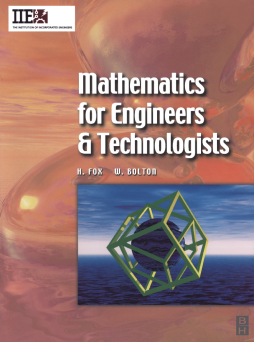
Additional Information
Book Details
Abstract
This book is carefully designed to be used on a wide range of introductory courses at first degree and HND level in the U.K., with content matched to a variety of first year degree modules from IEng and other BSc Engineering and Technology courses. Lecturers will find the breadth of material covered gears the book towards a flexible style of use, which can be tailored to their syllabus, and used along side the other IIE Core Textbooks to bring first year students up to speed on the mathematics they require for their engineering degree.
*Features real-world examples, case studies, assignments and knowledge-check questions throughout
*Introduces key mathematical methods in practical engineering contexts
*Bridges the gap between theory and practice
'I am sure that the heavy use of application examples and case studies has considerable potential. Likewise, the section on model building is welcome, given the number of texts that concentrate on the solution of equations without any great reference to their origins or context.' John Szymanski, Senior Lecturer University of York
'The proposed outline for the Maths book sits very well within the core IIE series. In my opinion, it provides a coverage which will satisfy at least 80% of the required maths profile for the vast majority of IIE engineering courses for year 1 and will also support mathematics teaching in the second year (and a substantial part of the syllabus for other engineering courses). It is supportive of the subjects covered in the Mechanical Systems book (will be covered in the Electronic Engineering book) and, to some extent, the business book, although this relies on less mathematical rigour. The proposed approach appears quite different from the majority of likely competitive texts in that it approaches the subject of mathematics from an engineering systems perspective, introducing the need for the techniques before introducing the techniques themselves. In this way, I feel it will be a great support to the education of IEng students by breaking down the barrier that so often exists, namely the lack of immediate connectivity between the concept and the application.' Alistair Duffy, Series Editor
